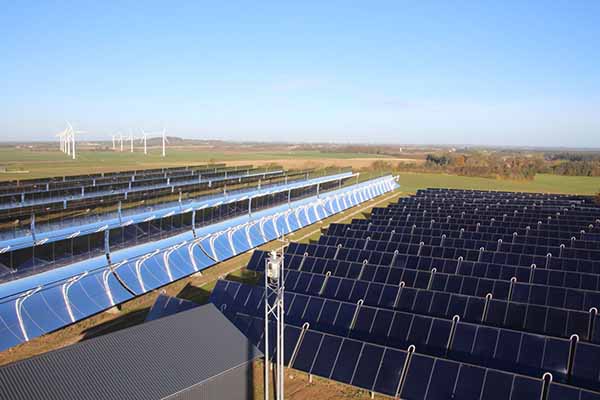The demand for solar district heating exceeded USD 2.5 billion in 2021, and it is expected to increase at a CAGR of over 7% from 2022 to 2028.
The global solar district heating market is predicted to grow over the forecast period, as technology is a cost-effective and environmentally responsible way of providing heat and energy. Solar thermal is expected to meet 15–20 percent of worldwide district heat demand by 2022, according to studies.
The solar district heating market trends indicate that the industry will rise as more public and private actors participate in infrastructure development, as well as the lower operating and maintenance costs of solar district heating (SDH) systems. Their environmentally benign nature, combined with low greenhouse gas emissions and simplicity of access, will impact product uptake favorably. In addition, strong energy efficiency standards and rules are being implemented to help the sector expand.
The emerging trends in the solar district heating market portray rapid industrialization as one of the main drivers of the industry. Globally, the number of industries is increasing. As a result, there is a significant demand for electricity and heat. This has significantly improved the sales of solar district heating systems. As a result, during the projected period, the worldwide solar district heating market is expected to be driven by increasing industrialization.
As per the solar district market report, district heating has recently emerged as one of the prospective markets for renewable energy, with solar energy likely to play a major role throughout the projection period. Solar thermal energy is widely employed in both industrial and residential settings.
Another important benefit is affordable heat, which is projected to boost the overall demand for solar district heating in the future. The global solar district heating market adoption trends are likely to be established as a prominent application category for electricity and heating.
Solar district heating market key trends & opportunities have established government rules that are aimed at lowering carbon emissions as a primary driver of the global solar district heating sector. Government incentive programmes that encourage the construction of solar district heating systems are also propelling the sector forward. Furthermore, due to environmental concerns, a majority of enterprises and government entities are switching to solar energy applications from traditional district heating systems.
Rapid urbanization is one of the primary drivers of the worldwide solar district heating market, as cities grow in size and demand for energy-efficient, low-carbon solutions increases. Solar district heating systems provide zero-emission solutions, propelling the solar district heating sector forward.
Over the projection period, the worldwide solar district heating market forecast is likely to be hampered by high initial costs associated with solar system installations. The overall market demand is projected to be hampered in the future by high heat distribution temperatures in district heating systems, resulting in low solar collector performance.
By 2025, the market for solar district heating is expected to have surpassed US$ 7 billion.
Key Takeaways
- The Asia Pacific solar district heating system market is expected to be driven by favorable regulatory policies that encourage infrastructure development and an increase in renewable energy investments.
- Rapid urbanization and greater spending on solar district heating system development are expected to boost demand for solar district heating systems.
- Due to increased infrastructure expenditures and solar-based power generating projects, China and Japan are likely to account for a considerable proportion of the Asia Pacific solar district heating market over the forecast period.
- Due to the introduction of sustainable construction solutions as well as internal heat loads, the residential and central solar heating industry is expected to reach US$ 2 billion by 2028.
- During the forthcoming years, the solar district heating market in Latin America and the Middle East, and Africa is expected to grow at a rapid pace.
Competitive Landscape
Fortum, KELAG Energie & Wärme GmbH, Göteborg Energi, Korea District Heating Corporation, Keppel Corporation Limited, LOGSTOR A/S, rsted A/S, Ramboll Group A/S, RWE, NRG Energy, Inc., Shinryo Corporation, Statkraft, STEAG GmbH, Vattenfall AB, Savosolar, and Aalborg CSP are among the major players in the solar district heating market. Mergers, joint ventures, strategic ramifications, product innovations, and contracts, among other things, is likely to boost the corporate picture.
The global market study on solar district heating established that the market presence of well-established firms would be enhanced by strategic alliances and collaborations, as well as ongoing agreements.
Savosolar was awarded a contract by Fernwärme Ettenheim GmbH in July 2019 to install a solar district heating system in Germany. The company plans to deliver a 1,700 square metre solar collector field with a heat storage capacity of 200 cubic metres to the city southwest of Stuttgart. By the end of 2019, the deal is expected to be valued at more than US$ 904,000.
These insights are based on a report Solar District Heating Market by Future Market Insights















